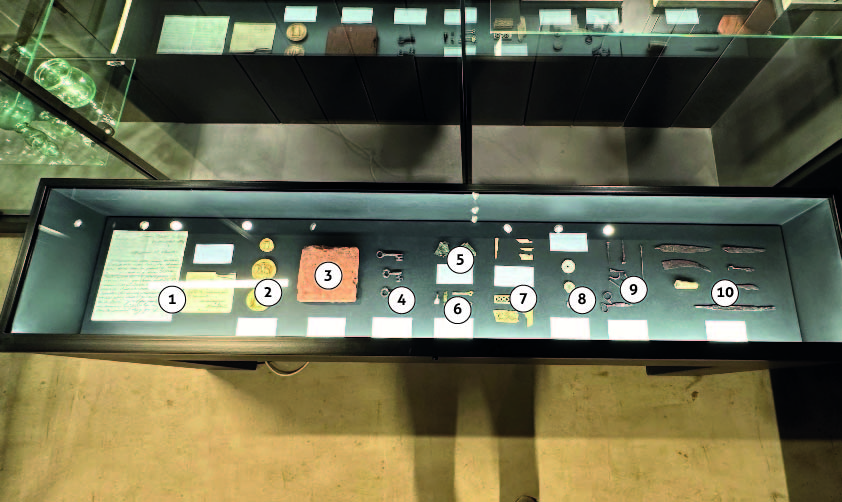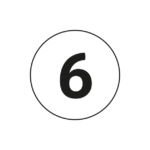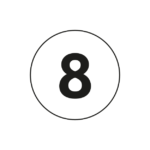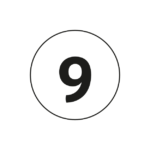ARCHEOLOGY


Last letter written by Jacques-Michel Daure (Montauban, 1797 – Penne, 1834)
- Written on 20 November 1834
- To Viscount Ouvrier de Bruniquel, owner of Penne, with envelope
- Donated by Pierre Malrieu.
After being rejected by the woman he loved, Daure chose to kill himself in the ruins of Penne Castle after a long stay in the village. The drama made a lasting impact on local people. The young man’s wish to be buried in the romantic castle ruins was respected.
Later, in about 1910, his body was exhumed and taken to Réalville cemetery (Tarn-et-Garonne).
« My Lord,
When your hand breaks the seal on this letter, my own will have broken the springs that gave me life, and I will be lying dead on the platform of the ruined castle you own in Penne… ».

Seal of the lords of Penne
- Casts
The first seal features a rounded escutcheon with three small feathers back to front in parallel horizontal lines. It is the seal of Bernard de Penne, the brother of Olivier, and joint ruler of Penne d’Albigeois in the first half of the 13th century.
The second is the obverse of an equestrian war seal with sword made for Olivier de Penne, joint ruler of Penne d’Albigeois in the first half of the 13th century.
The third is the reverse of Olivier’s equestrian seal, showing a rounded escutcheon with a feather drawn back to front (a feather known in Latin and in Occitan as a pena).

Floor tile
- Medieval period
- Fired clay
- Penne Castle – main building II area
A very hard, quadrangular and flat brick used as indoor floor tiling.

Keys
- 14th century
- Iron
- Penne Castle – courtyard area

Book decoration
- 15th-16th century
- Copper alloy
- Penne Castle – church area
Ornamental metal decorated with geometric and floral patterns. They can be interpreted as decorative elements or corner pieces for a book cover.

Book or furniture hinges
- Before the 16th century
- Copper alloy
- Penne Castle – church area
They were used to decorate books or furniture (chests).
.

Carved bone objects
- Before the 13th century
- Deer antler, bone and ivory
- Penne Castle – church area
Carved bone objects
Small sheets of bone that could be joined together and used as decoration for ceramics, utensils, book illuminations, etc.
Above
- Before the 13th century
- Deer antler, bone and ivory
- Penne Castle – church area
Below
- Medieval period
- Sculpted bone
- Guy Dubois Collection, Rouen
Three sculpted and open-work bones decorated with rinceaux and a human head.

Fishing weights or spindle whorls*
- 11th-12th century
- Lead
- Penne Castle – church area
A weight fixed to the line or net to immerse it in the water or keep it at the bottom.
*Disc-shaped objects with a hole in the centre, where the spindle was inserted. Its weight helped make sure that the spindle turned at the same speed when spinning thread.
A spindle whorl may be made of bone, terra cotta, stone, lead or sometimes from a reused tile.

Set of nails, spike and scissors
- Modern period
- Iron
- Penne Castle – church area
A set of tools with scissors used in different professions: scissors or shears for an embroiderer, surgeon, dressmaker, lacemaker, gardener, tailor, etc.

Knife blades and handles
- 11th-12th century (blades) and 14th century (handle)
- Iron and deer antler
- Penne Castle – courtyard area
The handle made of deer antler was probably designed as a table utensil handle or for a knife that was never finished.

